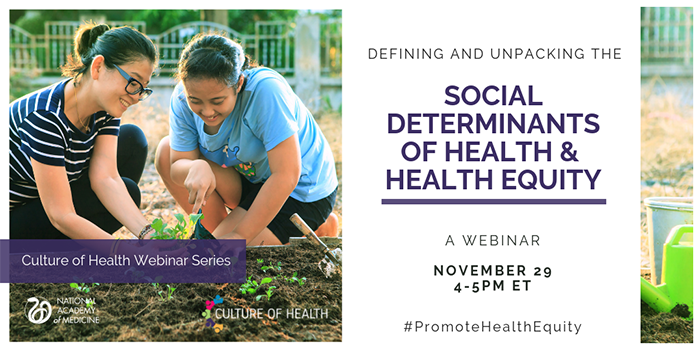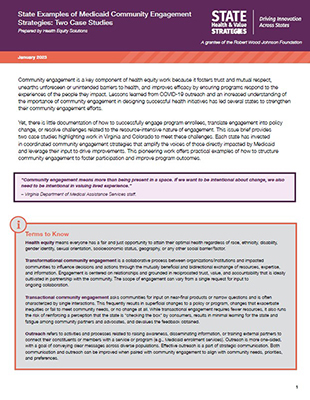Example #1: What if the poor were part of city planning? - Smruti Jukur Johari
Almost a billion people worldwide live in informal communities and slums, often without basic infrastructure like clean water, toilets or adequate roads. Urban planner Smruti Jukur Johari breaks down myths about these communities and shares examples of simple, common-sense solutions that arise when governments and architects work together with the residents -- instead of around them.
Example #2: Interview with Phil Rabinowitz
Phil Rabinowitz is the chair of the public policy committee and a board member of the Massachusetts Coalition for Adult Education (MCAE). He spoke with the Community Tool Box about his experiences in getting people affected by a problem engaged in its solution.
"The U.S. Department of Education had a team traveling to several cities around the country to collect testimony about the refunding of the Adult Education Act, which is the major federal source of money for adult literacy, English as a Second or Other Language (ESOL), and Adult Basic Education (ABE). When we at the MCAE heard they were coming to Boston, we decided to put on a proper show, especially since we'd heard that the turnout in other places had been pathetic--as few as 3 or 4 people testifying in some places. Since there were only about 8 stops, we felt these kinds of numbers were inexcusable.
"We fired up the communication network to alert programs around New England, and, in addition, I wrote up an information sheet for students. I aimed it at about 4th grade level so that most could read it, but tried to word it so that it didn't talk down to anyone. It explained what the meeting was about, how it would affect us in Massachusetts if the Act wasn't refunded, exactly how much of the state funding was dependent on federal spending, etc. One assumption behind this information sheet was that people couldn't be effective advocates unless they understood exactly what they were advocating for.
"The meeting was scheduled to last for a morning, with an optional afternoon session in case there were more people waiting. Two hundred showed up to testify, most of them students, and the students were by far the most articulate and powerful, talking about how their lives had changed as a result of the opportunity to learn to read or to speak English.
"People talked about feeling like less than nothing, and thinking they were the only ones in the world who couldn't read and write well, or who didn't have a high school diploma. They talked about their own kids turning their school performance around when they realized how serious their parents were about education. Some displayed transcripts of the college courses they had taken since graduating from an adult ed. program. Students came in buses from Maine and New Hampshire, leaving at three in the morning and not getting home till after midnight, because they wanted to tell their stories.
"The Department of Education people were blown away. They stayed two extra days so they could hear everyone who wanted to testify, and later wrote to the state administrator about how impressed they were with what they had seen and heard, and how much it had swayed their opinions. They were tremendously respectful to the students who testified and to those who came to support them, and some of the stories had them in tears. All in all, a terrific example of what can happen when you get participants engaged in advocacy.
"Another time, a group of students in my program who were on welfare were tremendously concerned about what Massachusetts welfare reform would do to their chances for completing the program and continuing with their education. The proposal called for welfare recipients to receive benefits for two years and then they'd be taken off, never to be put back on again. They would have to work 20 hours--either paid or volunteer--to stay on even for the two years, and there was no support for education or training.
"On their own initiative, the students met and drafted a list of questions about the reform regulations: Where was child care going to come from for those who did community service? Wouldn't it make more sense for the administration to support education and training if they wanted people to be self-supporting after they got off welfare? Why were welfare recipients themselves not engaged in the planning of reform? And so on.
"They took 100 copies of these questions to a public meeting and made a presentation to a group including a couple of state senators and the head of the Department of Transitional Assistance (a position that corresponds with the state commissioner of welfare in most states). Nothing much, except lots of local support, came of all this, but the group of women engaged went on to other things. The experience served to show them that they had a right to be listened to, and the feedback they got from others at the meeting confirmed that what they had to say was intelligent and necessary. I've never felt prouder of a group of people."
Example #3: Creating Healthy Neighborhoods through Member Engagement
In New York City, there are an estimated 3 million people who live in a food desert, “an area with limited access to affordable and nutritious foods, particularly in a low-income area” (USDA). The majority of those directly affected are people of color.
In 2013 South Bronx, New York held a “day-long community conversation at the Food, Faith, and Health Disparities Summit to decide which actions could make their neighborhoods healthier.” There were 150 community members in attendance who were elderly, people of color, and those living in poor communities. All of these individuals are people who are directly affected by the lack of nutritious food sources in their community.
The summit was planned by New York Faith & Justice, Faith leaders for Environmental Justice, and Riverside Church; all of them concerned about food and health disparities in NYC. They went into it without solutions ready to implement, but instead listened to the community members with open ears and collectively came up with a plan on how to make improvements.
Community members are being asked to vote for those who support “creating food policy that includes everyone.” These organizations are giving community members a chance to change their own neighborhoods, and empowering them to take a stand for the health of their friends and family.
Learn more about how organizations are involving their community members: https://www.everyday-democracy.org/stories/creating-healthy-neighborhoods-through-action-and-policy-change
Example #4: Defining and Unpacking the Social Determinants of Health and Health Equity–A Culture of Health Webinar
The National Academy of Medicine (NAM) held the first webinar in its Culture of Health Webinar Series on November 29, 2018. The National Academies report Communities in Action: Pathways to Health Equity identified nine social determinants of health and how these determinants impact our health and the health of our communities. It features an example involving people most affected by the problem (such as promotoras de salud, those who have received nutrition assistance, youth). The report also defines health equity as the state in which everyone has the opportunity to attain full health potential and no one is disadvantaged from achieving this potential because of social position or any other socially defined circumstance. Read more.
Example #5: State Examples of Medicaid Community Engagement Strategies: Two Case Studies
Lessons learned from COVID-19 outreach and an increased understanding of the importance of community engagement in designing successful health initiatives has led several states to strengthen their community engagement efforts. The case studies in this issue brief from State Health & Value Strategies describe community engagement efforts by Medicaid programs in Virginia and Colorado. Both states engage members in councils designed to improve processes and outcomes in each state’s Medicaid program.
Example #6: How Built for Zero collaborative efforts are engaging those with lived experience in homelessness:
The Collective Impact Forum's September 18th, 2023 podcast covers how complex issues such as homelessness can feel unsolvable or intractable, but that through a commitment to a collective approach and strategies, communities can end homelessness.
Speaking with Community Solutions' (a nonprofit that is dedicated to ending homelessness) president Rosanne Haggerty, the program Built for Zero is discussed, which is a program network of more than 100 cities and counties working to ensure that homelessness can be rare or brief in their regions.






